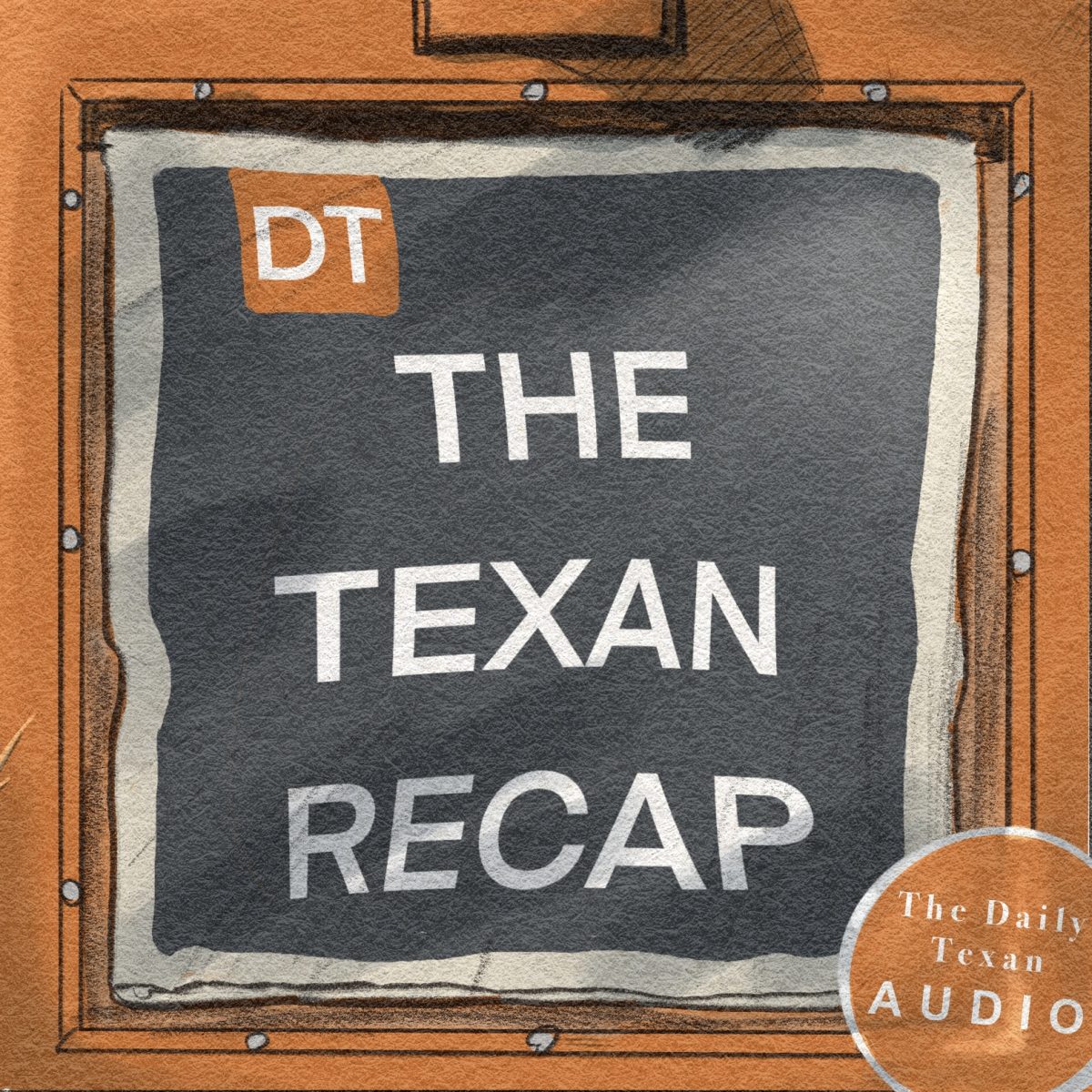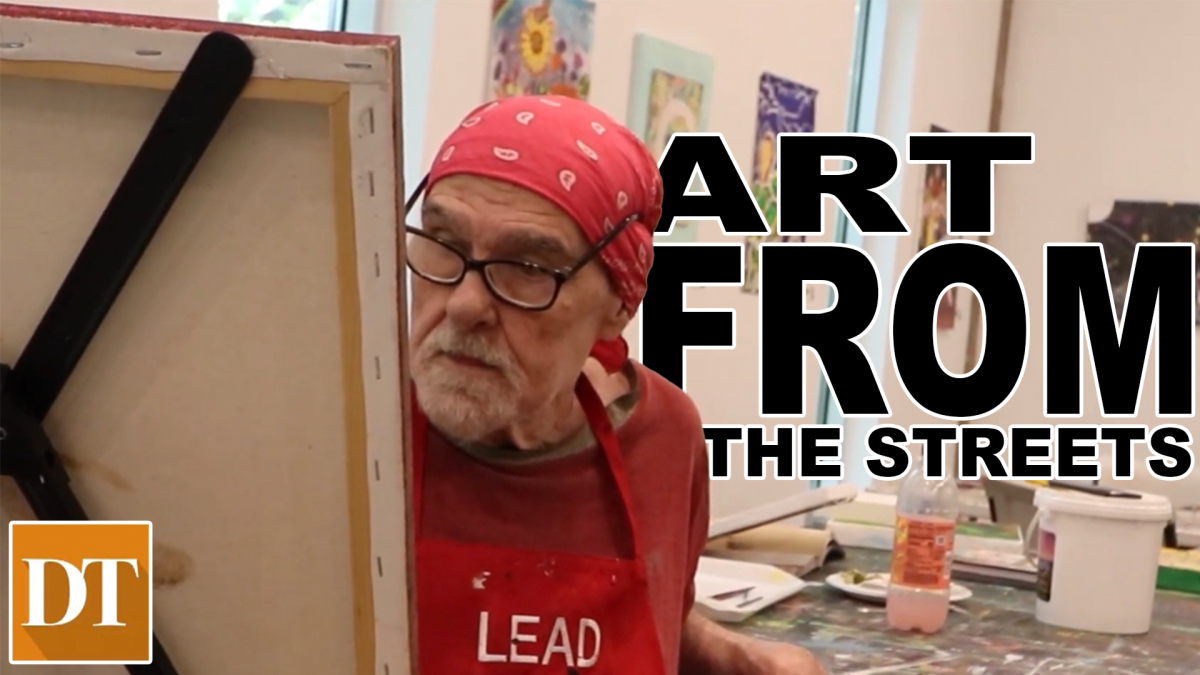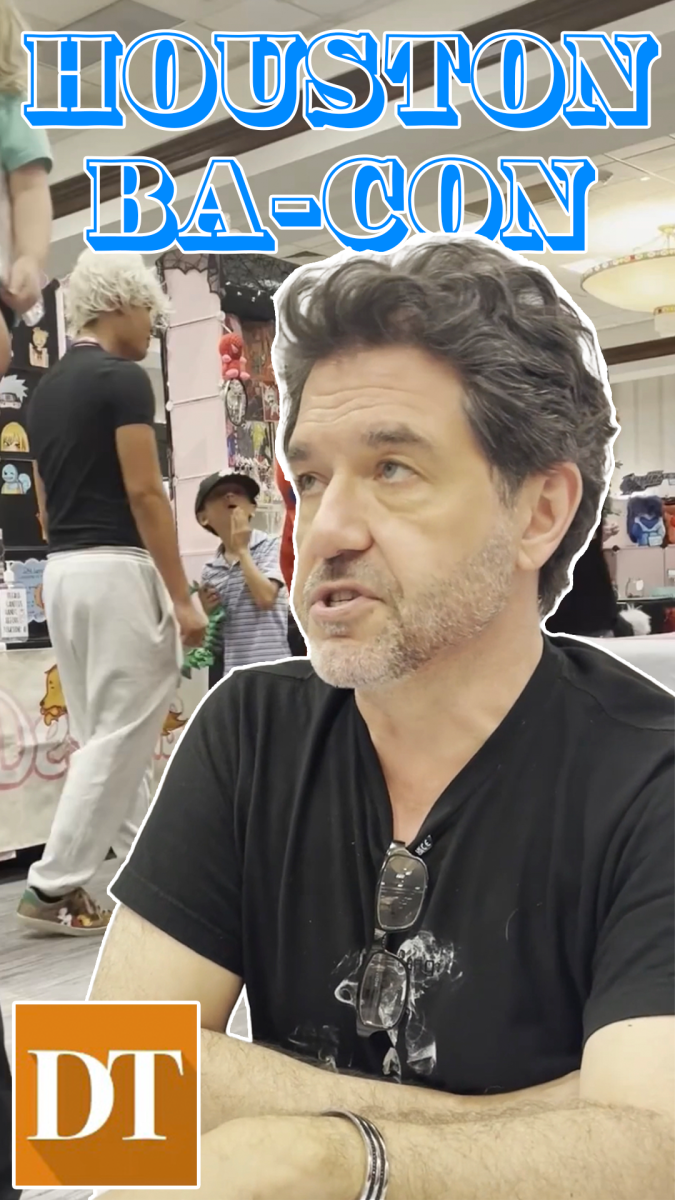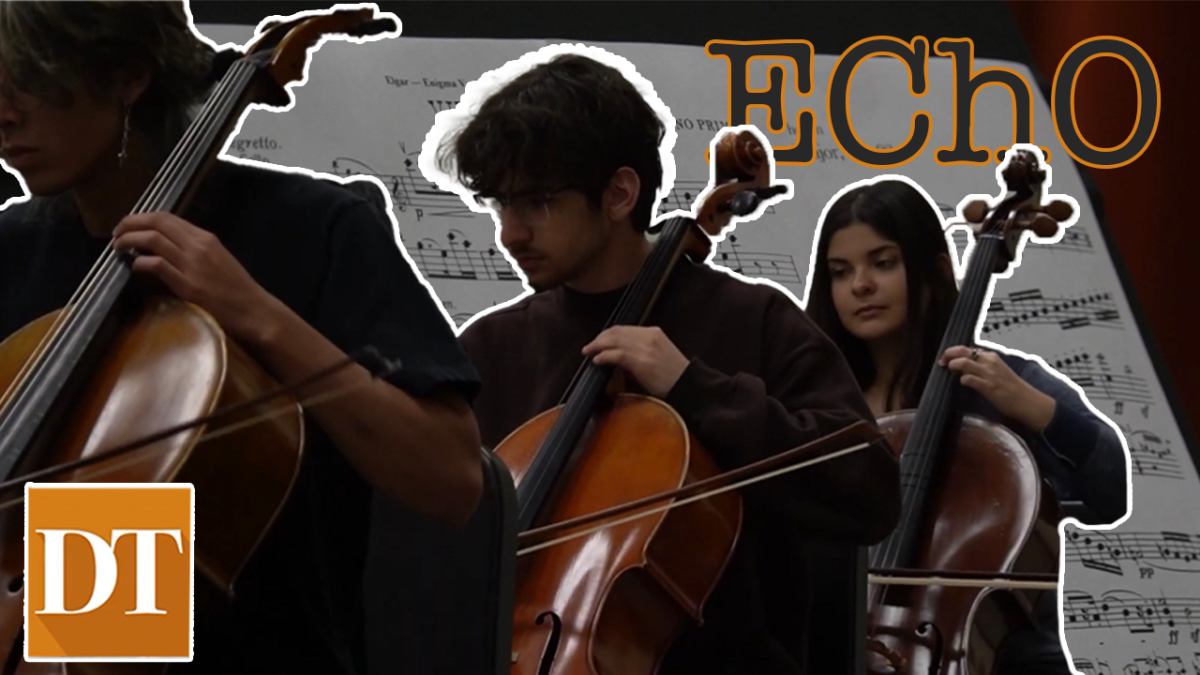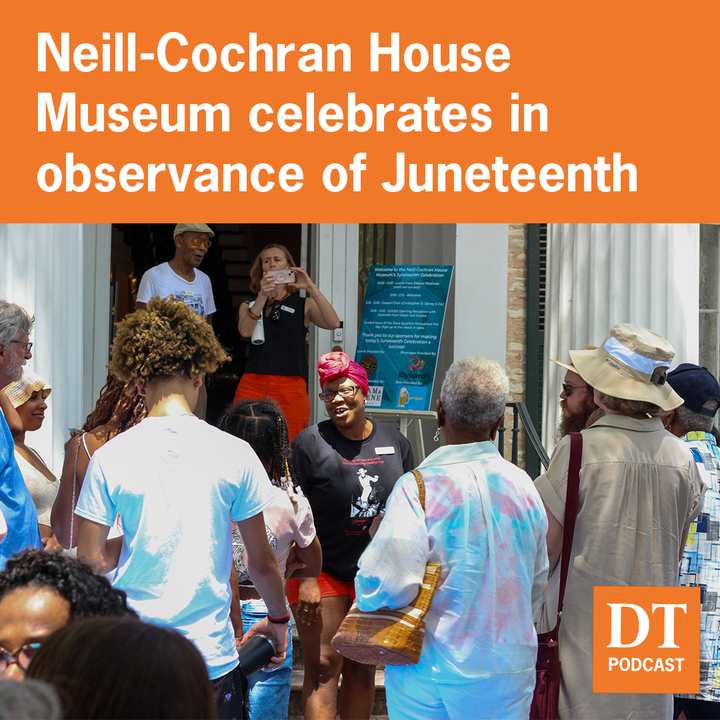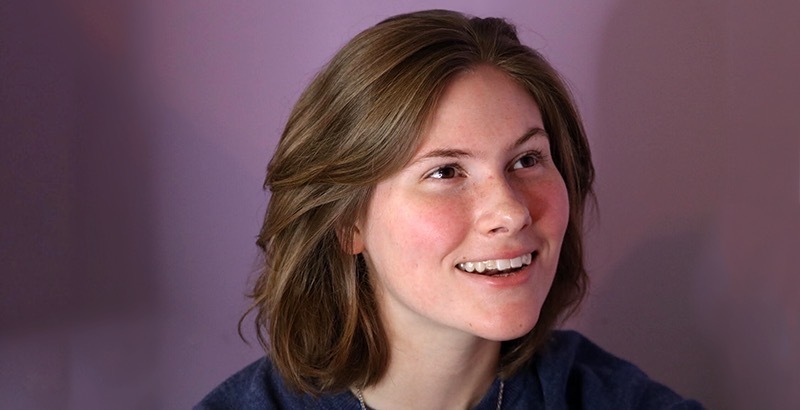Editor’s note: This podcast was originally published on Spotify on April 14, 2024.
In this episode of The Texan Recap, Senior Audio Producer Jack Lewellyn chats about “Soon Moon,” an eclipse-inspired art show hosted by UT’s Visual Arts Center. Plus, UT and the City of Austin work to collect and donate used eclipse glasses.
Reported by Analise Pickerrell and Erika Pernis. Hosted by Jack Lewellyn. Edited by Aislyn Gaddis. Cover art by Emma Berke. Music by Top Flow Productions.
*upbeat music*
Jack Lewellyn: UT’s Visual Arts Center hosts an eclipse-inspired art gallery …and UT and the City of Austin’s efforts to donate recycled solar eclipse glasses.
I’m your host this week, Jack Lewellyn, and this is The Texan Recap.
Here’s what you missed this week.
*upbeat music*
Jack: “Soon Moon” is an eclipse-inspired art show hosted by UT’s Visual Arts Center. Life and Arts General Reporter Analise Pickerrell is here with the story. Thanks for joining me, Analise.
Analise Pickerrell: Thanks for having me.
Jack: To start us off, could you elaborate on just what Soon Moon is?
Analise: So Soon Moon was a five-day eclipse-inspired show at UT’s Visual Arts Center.
It was open from April 5 to April 9, and it featured space-themed or space-inspired art of UT students, faculty, and staff.
Jack: In your article, you spoke with the art show’s lead curator. What did they have to say?
Analise: The lead curator, Jennifer Irving, said that despite the exhibit being centered around the eclipse, a lot of artists took the pop-up gallery as a chance to experiment.
She said the artists took it to mean a lot more than just being directly space-themed, and they’re interpreting it a lot deeper than they expected.
Jack: Excellent. Could you tell me about some of the pieces and performances at the show?
Analise: Yeah, there was a featured performer there, Billy X. Curmano. He’s an award-winning independent artist.
He’s best known for shocking demonstrations such as being buried alive for three days and swimming the entire length of the Mississippi River. He also laid on a bed of nails. During his April 5 performance, Cremano reflected on a 40-day fast he spent in Death Valley, and it coincidentally ended in the first lunar eclipse of the 21st century.
His performance was centered around celebrating the beauty of the eclipse, but also learning lessons from it and applying them to our own lives. He also performed a song he wrote that promoted this message of environmental preservation, which is really important to him as an artist. I also spoke with two UT art students, Mai Deguchi and Jane Simmons.
Mai’s piece was like a surrealism-inspired landscape, which you thought connected to the otherworldliness of the eclipse. And Jane’s piece was an oil painting that drew upon connected themes between the moon and femininity. So you can see the theme allowed for a lot of diverse interpretations.
Jack: Excellent. You also spoke to some of the artists and performers directly. What did they tell you?
Analise: Curmano, when I talked to him, said he hoped his performance increased curiosity about the heavens. And Simmons, she just commented on how cool it was to see what people associate with, when, what people associate when they think about the eclipse and space.
And she thought it was cool for us to connect with the natural world in that way. And then there was Nicholás Estévez Raful, who is an instructor at the Visual Arts Center, and he’s an artist in residence at UT, and he said he hoped the clips and celebrations about it would be a good opportunity for us to pause and come together as a community.
Jack: Excellent. Well, once again, that was Life & Arts General Reporter Analise Pickerrell. Thanks so much for being here.
Analise: Thank you for having me.
*upbeat music*
Jack: UT and the City of Austin work to collect and donate used solar eclipse glasses. General News Reporter Erika Pernis is here to tell us about it. Thanks for being here, Erika.
Erika Pernis: Hi, thank you so much for having me.
Jack: To start us off, how did UT collect all of its used solar eclipse glasses?
Erika: Yeah, so I spoke to the production coordinator with UT Events, and they purchased around, like, I think, 100,000 glasses to allow, like, as many people possible to experience the eclipse.
So obviously, like, that can produce a lot of waste if they’re not disposed of properly. So they want to make sure as many get recycled as possible. So they try to make the process very simple. And, at each of the 16 viewing locations, there are just like clearly labeled cardboard recycling bins for people to recycle their glasses until around 3 p.m. that day, so well after the eclipse.
Jack: All right. And in your story, you talked to someone from the Hill Country Alliance about the recycling initiative. What did they tell you?
Erika: So, Hill Country Alliance has been helping, like, counties across the Hill Country, including Austin, prepare for the eclipse. And the person I talked to, Dawn Davies, is actually the person who brought up the idea of recycling the glasses in Austin to, one, minimize, like, the environmental impact with the amount of glasses being used because they’re made of materials like plastic, paper, and other materials that just take a long time to, like, break down.
But also, recycling the glasses and reusing them could potentially help a lot more people experience and learn more about eclipses because the glasses and like protecting your vision are such a big part of the viewing experience.
Jack: Hmm. And who are the recycled glasses being donated to? What do they plan on doing with them?
Erika: So the glasses at UT and in Austin are being donated to a non-profit organization called Astronauts Without Borders and they take the donated or recycled glasses and distribute them to communities that may not have access to them to once again like push their initiative to allow as many people as possible to experience the eclipse like across the globe.
Because a lot of the time, like, this is like a once-in-a-lifetime thing for people to experience, and they’re also just really visually interesting to look at, and they do, like, draw a lot of attention within communities like it did in Austin.
Jack: And lastly, you also spoke with a member of Austin Parks and Recreation about these efforts. What did they have to say?
Erika: So, UT and Austin Parks and Recreation partnered up to allow for, like, all these solar eclipse viewing locations across the city because like I said before the eclipse had a lot of like cultural significance and it was a really big deal in Austin. So we talked a little bit more about like the collection process.
So, the city collects all the recycled glasses from UT and other viewing locations in the city, but before they get donated they have to be vetted or, like, checked for reusability before they can be donated and reused.
And, she also talked about how Austin puts a lot of value in, like, sustainability and the environment, so they kind of hope this becomes a more, like, common practice, not only across Austin, but for viewing eclipses in general, and that these glasses do get recycled and donated, and people don’t just, like, dispose of them after using them, like, a singular time, and likely, like, probably aren’t going to touch them again.



